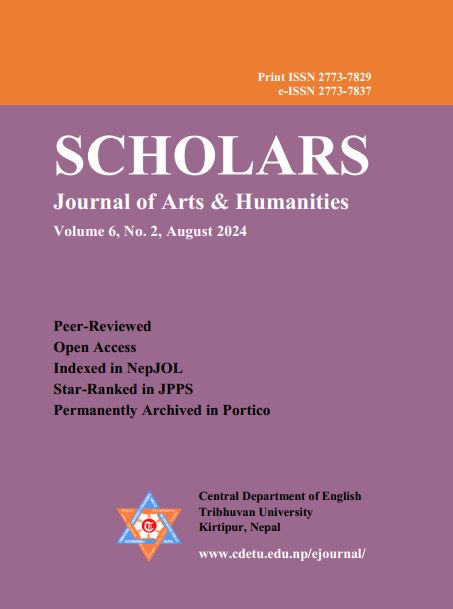The Interconnections of Food and Femininity in BP Koirala’s Sumnima and Govinda Bahadur Malla’s The Window of the House Opposite
DOI:
https://doi.org/10.3126/sjah.v6i2.68739Keywords:
Food, femininity, social inferiority, gastrocriticismAbstract
The aim of this paper is to map out the interconnections of food and femininity in Nepali fictional texts of the early twenty-first century. The gastrocritical approach helps understand the food-related behaviors in the literary texts. B.P. Koirala’s Sumnima and Govinda Bahadur Malla Gothale’s The Window of the House Opposite are considered the sources of evidences for making an associative study between gastrocriticism and feminist studies. Informed by the analytic framework such as cross-case and within-case analysis, this study uses the critical insights of Claude Levi Strauss’s “Gusteme” Mary Douglas’s “Deciphering a Meal” and Roland Barthes’s “Food as System.” The cross-case analysis and within-case analysis assert that food is a remarkable determinant of Nepali femininity, which has not been the wholesale victim of patriarchy as the daughter’s role is in an advantaged position as compared to the role of daughter-in-law and wife. This discourse between gastrocriticism and feminist studies, thus, establishes a generalization that women in the twenties of the turn of twentieth century had not received an undifferentiated treatment.
Downloads
Downloads
Published
How to Cite
Issue
Section
License

This work is licensed under a Creative Commons Attribution 4.0 International License.
© Central Department of English, Tribhuvan University and Authors




